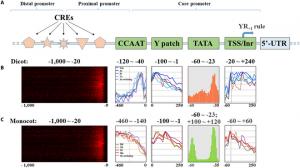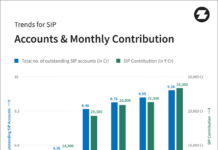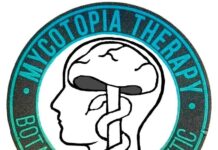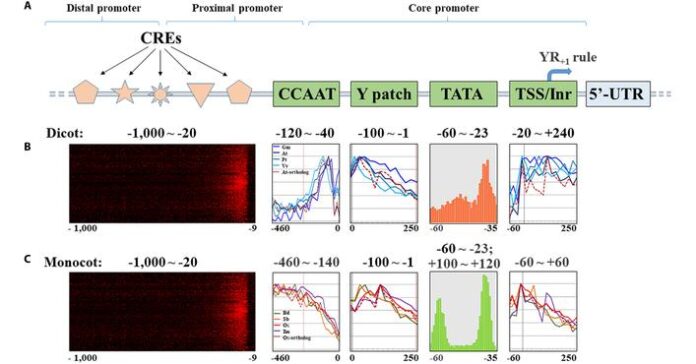
Locations of the cis-regulatory elements (CREs) and core promoter motifs CCAAT, Y patch, TATA-box, and TSS/Inr within dicot and monocot promoters.
Researchers explain how new sequencing methods can and need to be leveraged to benchmark promoters and promoter–terminator combinations in bioengineering.
CHINA, December 11, 2023 /EINPresswire.com/ — Characterizing gene promoters and promoter–terminator combinations is crucial for maximizing the benefits of bioengineering applications in plants. However, traditional methods of identifying promoters and terminators have severe limitations. In a review article, researchers from the Uniter States explain how new sequencing methods can be used to comprehensively understand the ability of various promoters and promoter–terminator combinations and improve the precision of their use in plant bioengineering.
Plant bioengineering—in which plant genes are modified to include desirable characteristics—is the key to solutions for problems concerning crop resilience and food security. Elements like gene promoters and terminators play a pivotal role in high-precision bioengineering. The interplay between these elements influences transcription and gene expression levels in plants and understanding it is pivotal to achieve precision in plant bioengineering.
In an article that was published on 7th July 2023, in Volume 5 of the journal BioDesign Research, researchers from the United States explain how different promoter–terminator combinations affect gene expression and how new technology can be leveraged to identify and characterize them, thus improving bioengineering tools.
Plant DNA can be fragmented into functional units known as ‘bioparts’ that consist of promoters, terminators, and cis-regulatory elements that orchestrate gene expression. Promoters, with distinct regions like the core, proximal, and distal regions, interact with transcription machinery to regulate gene expression. Promoters have specific motifs, such as TATA-boxes, which impact their function and specificity, or enhancers and repressors, which modulate gene expression patterns in response to varying conditions. Further, cis-regulatory elements in plant promoters act as specific regulators of gene expression. Terminators, on the other hand, mark the end of RNA transcripts, aiding in their processing, transport, and stability while protecting them from degradation. They also prevent read-through transcription of downstream sequences.
Differences exist between the core promoters present in dicot and monocot plants, highlighting their unique features and performances. The rational engineering of synthetic core promoters by combining specific motifs will significantly boost promoter activity. Cis-regulatory elements in plant promoters, found across proximal and distal promoter regions, offer insights into shared transcriptional regulation mechanisms between dicots and monocots.
Previous studies have characterized numerous native plant promoters, curated this information in databases, and utilized it for constitutive or conditional transgene expression. Combinatorial cis-regulatory elements and their interactions with transcription factors determine the strength and expression patterns of these native promoters. Although computational tools aid in motif discovery, experimental validation remains crucial due to prediction limitations.
“Only a small number of promoters and terminators have been experimentally characterized and validated in plants. Thus, there is high demand to expand the number of functionally characterized promoters and terminators to serve as standard biological parts for plant synthetic biology research and bioengineering”, explains Professor Wusheng Liu, the lead author of the review article.
The authors touch upon strategies for evaluating and benchmarking promoters and terminators in plant biodesign, focusing on their temporal and spatial expression patterns, environmental responses, and cross-species variation. Methodologies such as transient and stable expression approaches, reporter gene systems, and dual-reporter systems aid in assessing their performance and attributes. “Transient expression approaches are relatively simple and effective and can be quickly completed in various plant cells and tissues/organs. In contrast, stable expression systems involve complex and lengthy stable plant transformation but provide the most robust information on the function and strength of promoters and terminators,” explains Prof. Liu.
Despite challenges in traditional identification methods, sequencing-based approaches like ATAC-seq and the integration of RNA-seq and ATAC-seq offer promising avenues for discovering regulatory elements and refining bioengineering efforts. Benchmarking different regulatory elements with varied expression patterns aids in constructing genetic circuits and pathways in plant biodesign.
In conclusion, the study encapsulates the multifaceted roles of promoters and terminators in plant genetic engineering, showcasing their significance in manipulating gene expression for various applications and highlighting the evolving strategies for their assessment and utilization in plant biodesign.
DOI
10.34133/bdr.0013
Original Source URL
https://doi.org/10.34133/bdr.0013
Lucy Wang
BioDesign Research
email us here
![]()







































